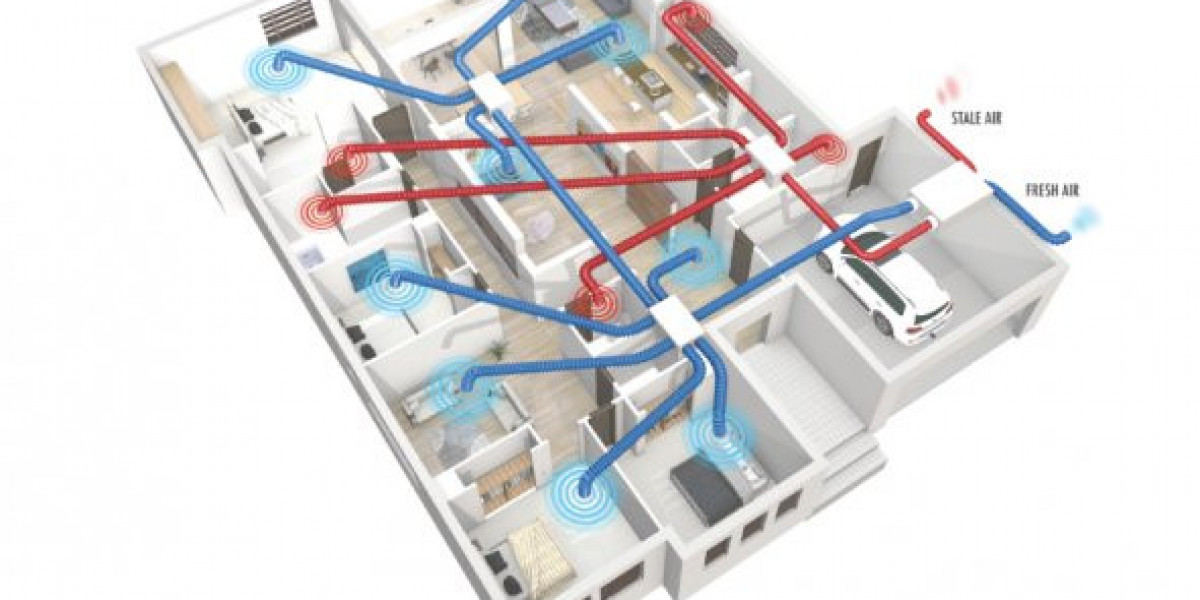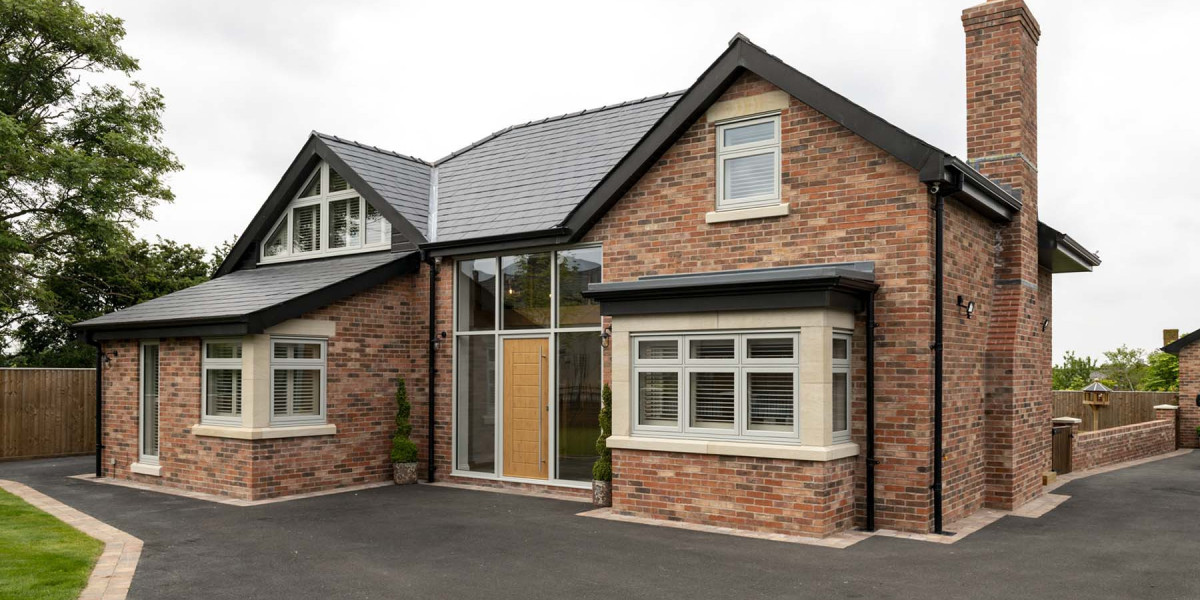Imagine this: you come home after a long day and step into your sanctuary, only to be greeted by stale air that leaves you feeling sluggish instead of refreshed. You might not realize it, but the quality of the air inside your home can significantly impact your health and well-being. In an era where we spend nearly 90% of our time indoors, ensuring that our living spaces are filled with fresh, clean air is more critical than ever. That’s where whole house ventilation comes in—a vital yet often overlooked component of a healthy home environment.
How Whole-House Ventilation Can Improve Your Health
Whole-house ventilation plays a vital role in enhancing your health. By ensuring the continuous circulation of fresh air, these systems reduce indoor pollutants that can trigger allergies and respiratory issues. With improved airflow, harmful substances like dust mites, mold spores, and volatile organic compounds (VOCs) are effectively expelled from your living space. This reduction lowers the risk of developing chronic conditions related to poor air quality.
Moreover, whole-house ventilation helps maintain optimal humidity levels. High humidity can lead to dampness and promote mold growth, which poses additional health risks. As stale air is replaced with fresh outdoor air, you may notice an increase in your overall energy levels. Breathing cleaner air contributes to better sleep patterns and enhanced cognitive function. Investing in whole-house ventilation creates a healthier environment for everyone in your home. It’s a proactive step towards fostering well-being for you and your family.
The Essential Role of Heat Recovery System
When it comes to whole-house ventilation, one crucial component that should not be overlooked is the heat recovery system (HRS). The HRS plays an essential role in ensuring proper air circulation and maintaining a healthy indoor environment. First and foremost, the primary function of an HRS is to recover heat from outgoing stale air and transfer it to incoming fresh air. This process helps to maintain a comfortable temperature inside the house while reducing energy consumption. In other words, an HRS can help you save on your heating bill while still providing sufficient ventilation.
Moreover, the use of an HRS can significantly improve indoor air quality by continuously exchanging stale indoor air with fresh outdoor air. With traditional ventilation methods such as opening windows or using exhaust fans, there is no control over the quality of incoming air. This means pollutants, allergens, and other harmful particles can easily enter your home without any filtration. On the other hand, an HRS has filters that trap these contaminants before they enter your living space.
Why Choose Mechanical Ventilation and Heat Recovery
There are several reasons why mechanical ventilation and heat recovery (MVHR) systems are the preferred choice for whole-house ventilation. In this section, we will discuss some of the key benefits that make MVHR an essential component for maintaining a healthy indoor environment.
Improved Air Quality: The primary purpose of ventilation is to remove stale, polluted air from your home and replace it with fresh, clean air from outside. Mechanical ventilation systems achieve this by using fans to constantly circulate air throughout your house. This ensures a steady supply of fresh outdoor air, while also removing pollutants such as dust, allergens, and volatile organic compounds (VOCs) that can accumulate indoors. As a result, you and your family are less likely to experience respiratory issues or allergies caused by poor indoor air quality.
Reduced Moisture Levels: Another significant benefit of mechanical ventilation is its ability to control moisture levels in your home. Excessive moisture can lead to mold growth and other issues that can impact both the structural integrity of your house and your health. With an MVHR system in place, excess humidity is removed through bathroom fans or other designated exhaust points while ensuring that proper levels of moisture remain inside.
Noise Reduction: Traditional methods of natural ventilation such as opening windows or doors can often let in external noise pollution from traffic or neighbors into your home. MVHR systems, on the other hand, operate quietly without any disruption to your daily activities. This is especially beneficial for those living in noisy urban areas or near busy roads.
The Importance of Whole House Heat Recovery System
When it comes to maintaining a healthy and comfortable living environment, proper ventilation is crucial. This is especially true for modern homes that are built to be more airtight for energy efficiency purposes. However, with reduced air circulation, there is an increased risk of indoor air pollutants building up and affecting our health. This is where a whole house heat recovery system comes in. It is an essential component of whole-house ventilation that not only improves indoor air quality but also has numerous other benefits.
Indoor air pollution can be caused by various factors such as cooking fumes, cleaning products, dust mites, pet dander, mold spores, and volatile organic compounds (VOCs) from household items. Without proper ventilation, these pollutants can accumulate and lead to respiratory issues like allergies and asthma.
A whole-house heat recovery system helps to continuously remove stale indoor air and replace it with fresh outdoor air. The incoming air is filtered before entering the home, ensuring that the majority of pollutants are kept out. Additionally, as the system recovers heat from the outgoing stale air before expelling it outside, it reduces energy loss and saves on heating costs.
Choosing the Right Ventilation System for Your Home
Selecting the right ventilation system can be daunting, but it doesn’t have to be. Start by assessing your home’s size and layout. Larger homes may require more powerful systems. Next, consider your specific needs. Are you dealing with high humidity? Allergens? A balanced ventilation solution might suit you best.
Evaluate different types of systems: exhaust-only, supply-only, or balanced airflow systems. Each has its unique benefits depending on indoor air quality concerns. Energy efficiency is crucial too. Look for ENERGY STAR-rated models that reduce utility bills while maintaining comfort.
Don’t forget about noise levels; some units operate quietly while others can be disruptive. Check user reviews to gauge real-world performance before making a decision. Finally, consulting with an HVAC professional ensures you get tailored advice suited just for your home’s environment and conditions.
Value of Whole House Heat Recovery Ventilation System
A whole house heat recovery ventilation system (HRV) is a highly efficient way to ventilate your home while also maintaining an optimal indoor temperature. This technology has gained popularity in recent years due to its numerous benefits, especially for our health and well-being. One of the main advantages of a whole-house HRV system is that it helps to improve air quality inside the house.
Without proper ventilation, stale and polluted air can accumulate in our homes, leading to various health issues such as allergies, respiratory problems, and even more serious conditions like asthma or lung cancer. By constantly exchanging fresh outdoor air with stale indoor air, an HRV system ensures that your home remains free from harmful pollutants and maintains good indoor air quality.
Moreover, a properly functioning HRV system can also help regulate humidity levels in your home. High humidity levels can promote the growth of mold and mildew which can cause damage to your house's structure as well as trigger allergic reactions. On the other hand, low humidity levels can lead to dry skin and respiratory irritation. With an HRV system in place, you can maintain optimal humidity levels throughout your home, keeping both you and your property safe from potential hazards.
Maintenance and Care Tips for Your Ventilation System
Regular maintenance of your ventilation system is essential for optimal performance. Start by checking the filters monthly. Dirty filters can restrict airflow and reduce efficiency. Cleaning vents and ducts should also be on your to-do list. Dust and debris accumulate over time, which can lead to blockages. A simple vacuuming routine can keep things flowing smoothly. Inspect the fan and motor components periodically for any signs of wear or unusual noises. Early detection can save you from costly repairs down the road.
Consider scheduling an annual professional inspection as well. Experts have the tools and knowledge to identify potential issues that may go unnoticed. Finally, don’t forget about humidity levels in your home. Maintaining a balanced environment supports both health and system longevity, ensuring you breathe easy all year long.
The Role and Purpose of House Ventilation System
House ventilation systems play a crucial role in maintaining the air quality and overall health of a home. They are responsible for removing stale air, excess moisture, and harmful pollutants from the house while bringing in fresh outdoor air. One of the main purposes of a ventilation system is to provide adequate indoor air circulation. A well-ventilated house allows for proper airflow, preventing stagnant pockets of air that can lead to mold growth and other issues. This is especially important in tightly sealed homes where natural ventilation may be limited.
Another important purpose of a ventilation system is to regulate humidity levels. Excess humidity can lead to mold growth, which not only damages the structure of the house but also poses serious health risks. On the other hand, low humidity levels can cause dryness in the skin and respiratory irritation. A properly functioning ventilation system helps balance humidity levels by expelling excess moisture and introducing fresh, drier air into the house.
Moreover, ventilation systems play a significant role in removing harmful pollutants from indoor air. The Environmental Protection Agency (EPA) has identified poor indoor air quality as one of the top five environmental risks to public health. Indoor pollutants such as dust mites, pet dander, formaldehyde from furniture or building materials, and volatile organic compounds (VOCs) from cleaning products or paints can all be effectively removed through proper ventilation.
Conclusion
Clean air is essential for a healthy life. Whole house ventilation plays a key role in ensuring that air quality remains high within your home. By allowing fresh outdoor air to circulate, these systems help reduce indoor pollutants and allergens. Investing in the right ventilation system can lead to numerous health benefits, from improved respiratory function to enhanced overall well-being. The positive impact on your family’s health makes it worthwhile.
FAQs
Q: What Is Whole House Ventilation?
A: Whole-house ventilation refers to a system that continuously circulates fresh air throughout your entire home. It is designed to remove stale and polluted air from inside the house and replace it with fresh outdoor air.
Q: How Does Whole-House Ventilation Work?
A: The ventilation systems use fans or blowers to draw in fresh outdoor air and distribute it throughout the house through ducts. At the same time, it exhausts stale indoor air outside through another set of ducts.
Q: Why Is Whole-House Ventilation Important for your Health?
A: Indoor air can be up to five times more polluted than outdoor air. Without proper ventilation, these pollutants can build up inside our homes, causing various health issues such as respiratory problems, allergies, and asthma. Whole-house ventilation helps maintain a healthy level of indoor air quality by constantly bringing in fresh outdoor air and expelling harmful pollutants.
Related Business Listings |














